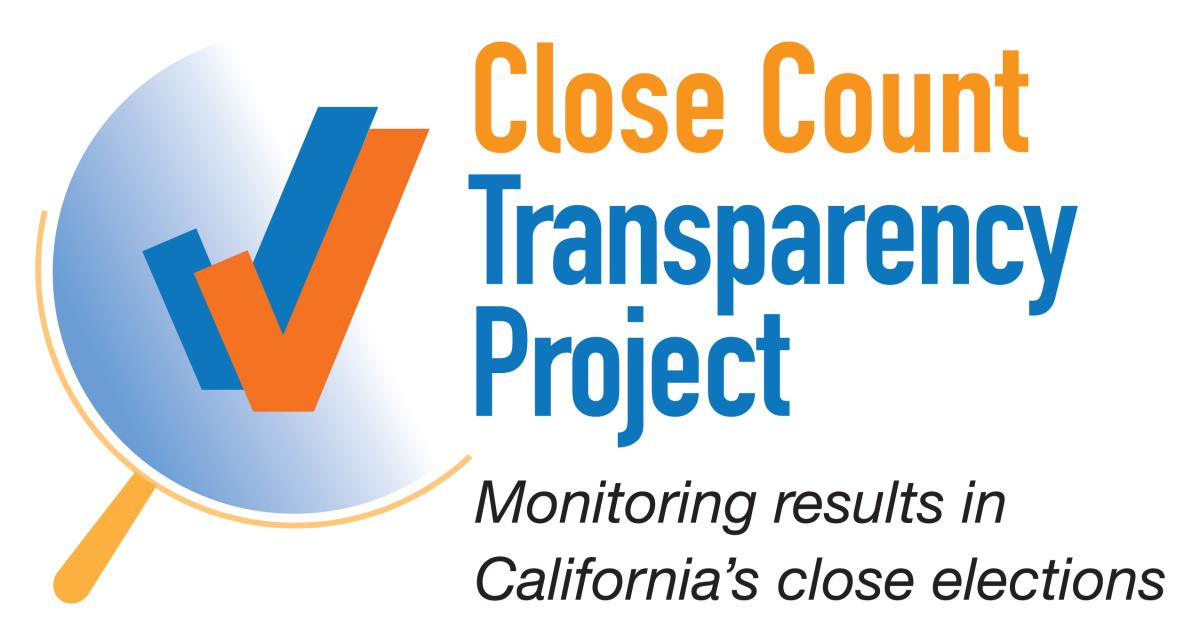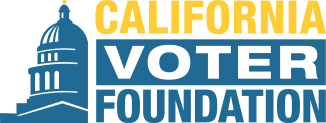Close Count Transparency Project

ABOUT THIS PROJECT
The California Voter Foundation (CVF) is monitoring several competitive California races in the November 2024 election to give the public and media a clear picture of how close the margin is in undecided contests and how many ballots remain to be counted in the counties that comprise those contested districts. This data is being updated daily beginning November 5th and continuing until the county certification deadline on December 5th. See CVF's California Online Voter Guide for other key election dates and information.
This project aims to provide a window into the vote counting process, which can be confusing even for experienced journalists and election observers. View the data by either following the link to the Google Sheet, or viewing the Google Sheet via the window below. Click on a contest number to tab through the districts and scroll across to see the count day-by-day. See About This Data below for information sources and to learn about the "known unknowns" in California's ballot counting process or to view CVF's 2022 pilot project.
CVF is producing and sharing a series of reports providing summaries of the contests being tracked and changes in the unofficial results throughout the post-election vote counting and canvassing period:
- Report 8: CD 13 still undecided as certification deadline looms
- Report 7: CD 13 lead flips as ballot cure deadline approaches (11/27/24)
- Report 6: CD 13 margin narrows, CD 45 lead flips (11/20/24)
- Report 5: Two CA U.S. House contests still "too close to call" (11/16/24)
- Report 4: Seven Undecided California House contests one week after Election Day (11/12/24)
- Report 3: Updated results improve Democratic candidates' vote totals (11/10/24)
- Report 2: Unprocessed Ballots Report (11/8/24)
- Report 1: Post-Election Night Report (11/6/24)
- Final Report (January 2025)
ABOUT THIS DATA
Data featured in these charts comes from the Secretary of State's Unofficial Election Results web site at electionresults.sos.ca.gov, which provides a County Reporting Status page showing how many ballots have been counted to date in all 58 counties. The election results site also provides an Unprocessed Ballot Status Report showing how many ballots remain to be processed by counties and is published by the Secretary of State the Thursday or Friday following Election Day. CVF also utilizes unprocessed ballot status reports on county election office websites where available.
Additional local election results are available on county websites, which can be accessed through CVF's Directory of County Election Offices.
Because election results are dynamic and updated continuously, this project provides a public record of where the count stands in close contests at specific times, so that people can see how the results fluctuate day by day regarding who is winning and losing. Narrow margins make it challenging to anticipate winners with so many ballots remaining to be counted. The outcome of California's close congressional contests in 2024 may determine the balance of power in the U.S. House of Representatives.
The tracking sheets note when the Associated Press "calls" a race for a candidate and when each county in that contest's districts certifies its results.
For more vote tracking resources, see Secretary of State's November 5, 2024, General Election Ballot Return Updates, available in PDF and XLS and the Close Contests feature summarizing state and federal contests where the outcome is within 2 percentage points or less.
CONTRIBUTING FACTORS TO CALIFORNIA'S LONG VOTE COUNT
While the shift to widespread use of vote-by-mail ballots, which require more time to process and count than in-person ballots, is viewed as the primary reason for California's long vote count, two other factors contribute significantly to the challenge of determining election winners.
California elections today are more competitive than a decade ago, before independent redistricting and the "Top Two" primary election process were implemented, in 2011 and 2012 respectively. Politicians no longer draw their own political districts; that job is now performed by an independent citizens' commission that shapes districts based on communities and not for politicians' political advantage. California’s “Top Two” primary election process sends just the top two legislative and congressional candidates, who may be of the same party, to the General Election ballot. This has increased competition and narrowed margins in tight races, with no third or fourth candidate on the ballot to provide a vote buffer between the two leading candidates. Another recent election reform, shifting local contests from at-large to district-based elections contributes to tighter margins in local races as well.
These changes brought more competition and narrower margins to the state's contests. According to a CVF analysis of congressional election results between 2002 and 2022, California’s congressional races the decade before these changes took effect saw little competition, with just one or two districts considered competitive, no incumbents defeated and several not even challenged. In the past decade, on average in each election, there have been five competitive contests, one or two incumbents defeated and none going unchallenged. Legislative term limits, enacted by voters in 1990, contribute to the heightened competition.
See CVF's Close Count Transparency Project news release for more information about the impact of these reforms and how the percentage of ballots counted soon after Election Day has declined in the past two decades with the rise in vote-by-mail balloting.
"KNOWN UNKNOWNS"
When viewing these charts, it is important to keep in mind three "Known Unknowns":
- The estimated total number of ballots cast will be known the Thursday following Election Day, once counties assess the several million vote-by-mail ballots arriving or postmarked on Election Day;
- The actual number of total ballots cast will be known when counties certify results on December 5th, after voters with signature issues on their vote-by-mail ballots have a chance to supply a valid signature and avoid being disenfranchised;
- The number of remaining ballots that could impact an individual contest will not be known until all of the unprocessed ballots in that contest’s county or counties are counted. Vote-by-mail ballots can be returned by voters from anywhere in the county rather than cast in specific precincts, depriving observers of the ability to make informed guesses about who the ballots remaining to be counted might favor.
TRACKING TEMPLATE
CVF is providing a template that can be downloaded and used to track other contests with instructions for editing the formulas to include additional candidates if needed.
SUPPORT FOR THIS PROJECT
The Close Count Transparency Project is supported by The Carter Center. A not-for-profit, nongovernmental organization, The Carter Center has helped to improve life for people in over 80 countries by resolving conflicts; advancing democracy, human rights, and economic opportunity; preventing diseases; and improving mental health care. The Carter Center was founded in 1982 by former U.S. President Jimmy Carter and former First Lady Rosalynn Carter, in partnership with Emory University, to advance peace and health worldwide.
2022 PILOT PROJECT
CVF undertook a similar pilot project in 2022, tracking many of the same districts that are being tracked in 2024, and is also available to view below.
- 2022 Close Count Tracking Sheet (pilot project)

